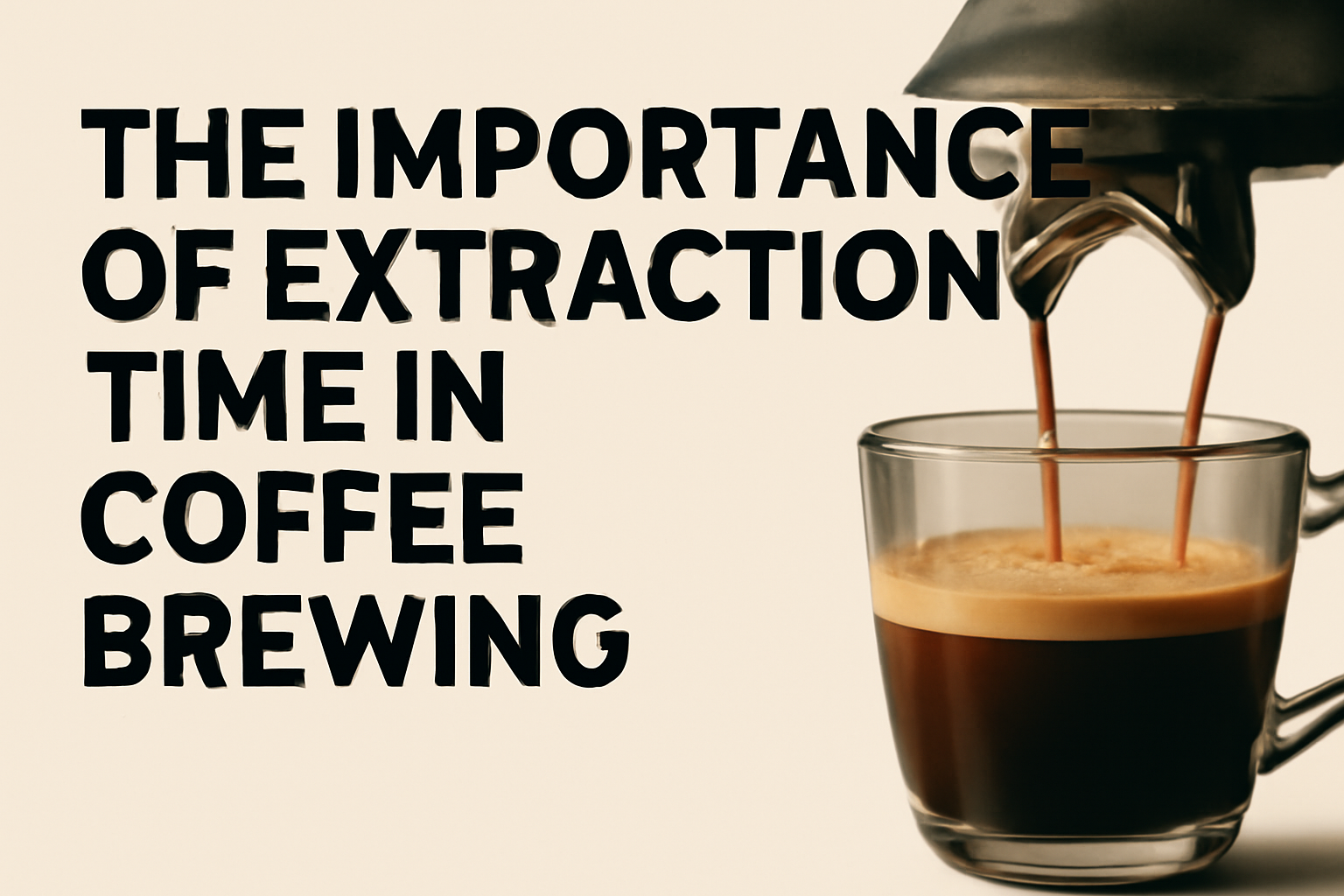Extraction time is one of the most critical factors in coffee brewing that directly influences the flavor, aroma, and overall quality of your cup. Understanding how extraction time affects coffee allows both beginners and seasoned baristas to craft the perfect brew, balancing bitterness, acidity, and sweetness. Whether you’re brewing espresso, drip coffee, pour-over, or cold brew, mastering extraction time can elevate your coffee experience to professional levels. In this article, we will dive deep into the science behind extraction time, its impact on coffee taste, and practical tips to control it for consistently delicious coffee.
Extraction in coffee brewing refers to the process of dissolving soluble compounds from coffee grounds into water. These compounds include oils, acids, sugars, and other flavor elements that create the complex taste profile coffee lovers enjoy. Extraction time is the duration water interacts with coffee grounds, and it plays a pivotal role in determining which compounds are extracted and in what amounts.
When coffee is under-extracted, the water hasn’t had enough time to pull out all the desirable flavors. The resulting coffee can taste sour, acidic, and thin. On the other hand, over-extraction happens when water interacts with the coffee grounds for too long, pulling out excessive bitter compounds and tannins, making the coffee taste harsh, dry, or burnt. Achieving the right extraction time ensures a balanced cup with a pleasant mix of sweetness, acidity, and bitterness.
The ideal extraction time varies depending on the brewing method. For espresso, extraction typically takes between 25 to 30 seconds, as espresso machines use high pressure to rapidly extract concentrated flavors. Pour-over coffee generally has a longer extraction time, ranging from 2.5 to 4 minutes, as water drips slowly through the grounds. Drip coffee makers often fall in a similar range, while cold brew requires several hours of extraction at low temperatures to achieve smoothness and low acidity.
Several factors influence extraction time, including grind size, water temperature, coffee dose, brew ratio, and agitation. Grind size is crucial because it controls the surface area exposed to water. Finer grinds increase surface area, speeding up extraction, which can lead to over-extraction if the brewing time isn’t adjusted accordingly. Coarser grinds slow extraction and may result in under-extracted coffee if the brew time is too short.
Water temperature also affects how quickly compounds dissolve. Hotter water extracts flavors faster but risks over-extraction if combined with a long brew time. Cooler water slows extraction and is ideal for methods like cold brew, where a prolonged steeping period compensates for the low temperature. Generally, brewing between 195°F to 205°F (90°C to 96°C) strikes a good balance for most hot coffee methods.
The coffee dose and brew ratio (amount of coffee to water) impact extraction by changing concentration and contact time. More coffee requires longer extraction to avoid under-extraction, while too little coffee with a long brew time can lead to over-extraction. Agitation or stirring during brewing ensures even extraction by allowing water to saturate all coffee grounds uniformly, preventing channeling or dry spots.
Monitoring and controlling extraction time is essential for consistency. Using timers or automated brewers helps maintain precise extraction times. Additionally, tasting your coffee and adjusting grind size or brew time based on flavor feedback is the hallmark of a skilled barista.
Professional baristas often use tools like refractometers to measure Total Dissolved Solids (TDS) and calculate extraction yield, helping them quantify extraction efficiency. The optimal extraction yield is typically between 18% and 22%, indicating the percentage of coffee solubles extracted from the grounds. Staying within this range ensures a balanced flavor profile without under or over-extraction.
Common brewing issues related to extraction time include sour coffee from under-extraction and bitter coffee from over-extraction. If your coffee tastes sour or weak, try increasing brew time or using a finer grind. If it’s bitter or harsh, reduce brew time or use a coarser grind. Experimenting with these variables helps find the perfect balance tailored to your taste preferences and brewing setup.
Different brewing methods require different approaches to extraction time. For espresso, dialing in the grind size and timing the shot precisely is key to avoid sour or burnt shots. Pour-over demands steady pouring technique and patience to allow proper extraction time, while drip coffee makers benefit from consistent water flow and grind adjustment. Cold brew’s long steeping time at room or refrigerator temperature yields a smooth, low-acid coffee perfect for summer days.
In conclusion, extraction time is a cornerstone of coffee brewing that determines the quality and flavor of your cup. Mastering the relationship between extraction time and other brewing variables like grind size, water temperature, and coffee dose allows you to craft coffee that satisfies your palate every time. Whether you’re brewing espresso or cold brew, understanding and controlling extraction time empowers you to unlock the full potential of your coffee beans. Start paying attention to extraction time today, and elevate your coffee game to new heights.

